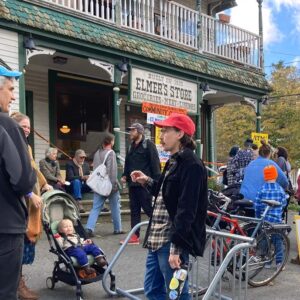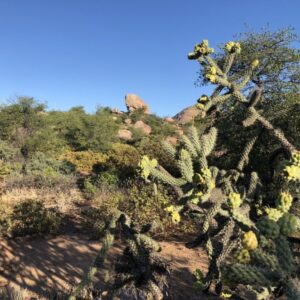
Nonprofits and philanthropic organizations in the United States have never seen a moment like this. With federal programs and resources being cut or weaponized, philanthropy must be restless and relentless. Funders like the Boston Foundation (TBF) are actively working to be bold and engaged, even as they take a longer-term view toward responding, protecting, and reimagining the work for these unprecedented times. But how can organizations do more, faster?
You don’t have to compromise your values to distribute funds quickly.
In 2023, TBF, where I work, built the Safety Net Grants program, a participatory grantmaking practice that supports social service organizations to address the essential needs of marginalized communities and vulnerable residents in Greater Boston. In typical times, the foundation has two grant cycles awarding roughly 20 two-year $50,000 grants, using a process in which affected communities decide which organizations to fund.
This year, conversations with nonprofit leaders indicated a pressing need for a special funding round to expand the work, and address the need, anxiety, and sense of powerlessness caused by the Trump administration’s efforts to target our communities, both physically and psychologically.
You don’t have to compromise your values to distribute funds quickly. We knew we needed to make this special round bigger, so we doubled it to more than $2 million. However, we knew it was just as important to stay true to a participatory, completely community-led grantmaking process. The question then became, “How can we make it fast?”
Identifying the Challenges Ahead
This spring, TBF and the Massachusetts Nonprofit Network commissioned the Nonprofit Federal Impact survey to better understand how nonprofit leaders are thinking about the effects of the federal government’s actions. Five hundred nonprofit leaders across the state confirmed all the concerns we heard anecdotally: More than 90 percent of respondents believed that their challenges will worsen under the new administration, with nearly three-quarters expecting to be “much worse off.” Additionally, 64 percent anticipated an increased demand for services as funding from federal sources becomes uncertain.
Expecting an unprecedented wave of applications, TBF tightened its messaging and narrowed our focus to prioritize vulnerable populations—including immigrants, LGBTQ+ individuals, people with disabilities, and seniors—and to prioritize categories of work, including combating hate and discrimination; providing food, fuel, and legal aid; and addressing poverty. We also streamlined our application process so organizations could complete applications in a shortened timeframe. And we broadened our outreach, collaborating closely with equity-fund leaders to ensure our applicants and grantees reflected inclusivity and impact.
Adaptability in community review processes is key.
Removing Bottlenecks
The outreach worked. More than 530 organizations applied for this special round, prompting us to accelerate our approval processes. To facilitate quicker funding disbursement, we shortened the application form—over half the applicants completed it within three hours. We focused on essential questions, including organizational missions and demographic information, to make sure we gathered enough data to make informed funding decisions without overburdening applicants; and we leveraged the latest submissions from past funding rounds rather than requiring new applications, allowing organizations to provide relevant updates instead.
We proactively asked our board to approve what we call a set-aside, a pool of money that has given us flexibility and permission to distribute funds off-cycle to better respond to the nonprofit community’s needs during this unprecedented time.
Equity was not just a consideration, it was at the center of our approach.
Adaptability in community review processes is key. TBF designed three flexible review structures—full, abbreviated, and special round processes—to fit our specific needs. Our full community review process can be time intensive, involving a set of prescreen reviewers, a set of full community reviewers, and a three-to-four-hour discussion to prioritize which organizations will receive funding. The abbreviated process maintains prescreening and full review but replaces discussion with a prioritization survey to minimize bias. To move more efficiently, we conducted one round of prescreening with two community reviewers for each application, combined their scores, and ranked the organizations for this special round.
Because of unexpectedly high application volume in this special round, we needed additional staff to categorize and vet organizations before assigning them to community reviewers. The initial 40 community reviewers recruited others to reach our goal of 60. We completed the reviews by building trust, being open, and compensating reviewers for their time.
Equity was not just a consideration, it was at the center of our approach. TBF operates through three designated equity funds—the Latino Equity Fund, the Equality Fund for LGBTQ+ individuals, and the Asian Community Fund. Collaborating with fund leaders proved invaluable, particularly when determining outreach strategies and recruiting community reviewers.
Lessons Learned
We still can (and must) do more.
Ultimately, this experience reinforced a critical takeaway: The need is immense. While we successfully allocated over $2 million in grants, we recognize that many deserving organizations remain unfunded. As a collective, funders must urgently consider ways to accelerate grant disbursement and eliminate obstacles in the application process. More cuts seem to be coming at the federal level, so waiting is not an option.
Focus on the essentials. The survey and our own conversations underscored that this is not the time to make nonprofits jump through hoops. Just as many organizations did during COVID-19, creating short, simple application processes and clear, concise funding guidelines are essential to ensuring nonprofits aren’t wasting valuable time, especially knowing that no matter how much we raise, we won’t meet all the need.
Refine the process. There was no way we would be able to distribute funds quickly without shortening every step of the process. From having our board approved a set aside to adapting our prescreen review, we were streamlining our workflow at every stage, to respond in the moment.
Plan for volume and recruit reviewers early. With an open process, we didn’t have control over how many organizations applied. It turned out to be four times our usual volume. Recruiting early ensured the appropriate amount of reviewers once applications were in.
Build trust. An expanded community-led grantmaking process is based on multiple levels of mutual trust. We asked our donor base to expand the pool of funds for this cycle and they responded with an additional $600,000. Our board supported the new processes. We knew our community partners would use their wisdom, knowledge and lived experience to choose a slate of remarkable grantees, and they did.
Embracing this moment requires flexibility and adaptability. Now is the time for all funders to step up and support nonprofits that address important community needs to make a lasting impact.














